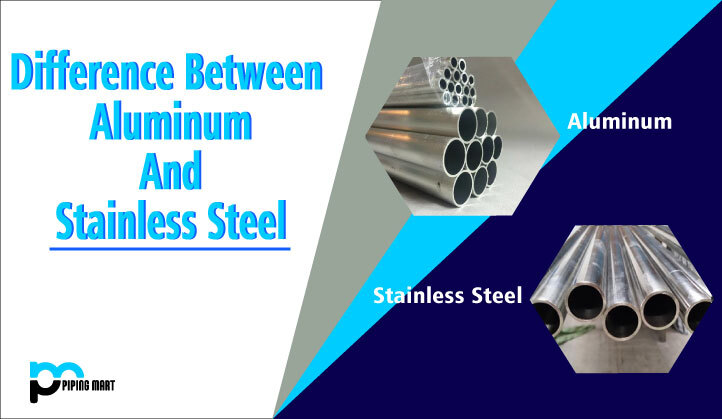Although aluminium and stainless steel have a similar appearance, they are not the same. When determining the sort of metal to utilize in your next project, keep these ten distinctions in mind:
Strength to weight ratio: Aluminium is not as strong as steel, but about one-third of its weight. This is the primary reason for using aluminium in aeroplanes.
Corrosion: Stainless steel is composed of iron, chromium, nickel, manganese, and copper. The chromium is used as an agent to provide corrosion resistance. Additionally, because it is non-porous, its corrosion resistance is strengthened. Aluminium has a strong oxidation and corrosion resistance due to its passivation layer. When aluminium oxidizes, the surface turns white and sometimes pits. Aluminium may corrode extensively in some extremely acidic or basic conditions, resulting in catastrophic results.
Thermal Conductivity: Aluminium has a greater thermal conductivity (heat conductivity) than stainless steel. This is one of the main reasons that aluminium is used in car radiators and air conditioning units.
Cost: Aluminum is generally much cheaper than stainless steel.
Workability: it is easier to cut and form Aluminum as is relatively soft. Stainless steel may be hard to work with because of its resistance to wear and abrasion. Stainless steels are tougher than aluminium, and they are difficult to form because of their hardness.
Welding: Welding aluminium is a little difficult, but welding stainless steel is considerably easier.
Thermal properties: Stainless steel can be used at substantially higher temperatures, but it is impossible to use Aluminum at extremely high temperatures because it becomes very soft above 400 degrees.
Electrical Conductivity: when we talk about Electrical Conductivity, As compared to most metals Stainless steel is a really poor conductor. Aluminium is an excellent conductor of electricity. Aluminium is widely used in high overhead power lines due to its high electric conductivity, lightweight, and resistivity to corrosion.
Strength: In terms of strength, stainless steel beats aluminium (provided weight is not a consideration).
Effect on Foods: Aluminum may react with foods by altering their colour and flavour. Stainless steel is less reactive with foods.

Pipingmart is B2B portal specializes in industrial, metal and piping products. Also, share latest information and news related to products, materials and different types grades to help business dealing in this industry.




